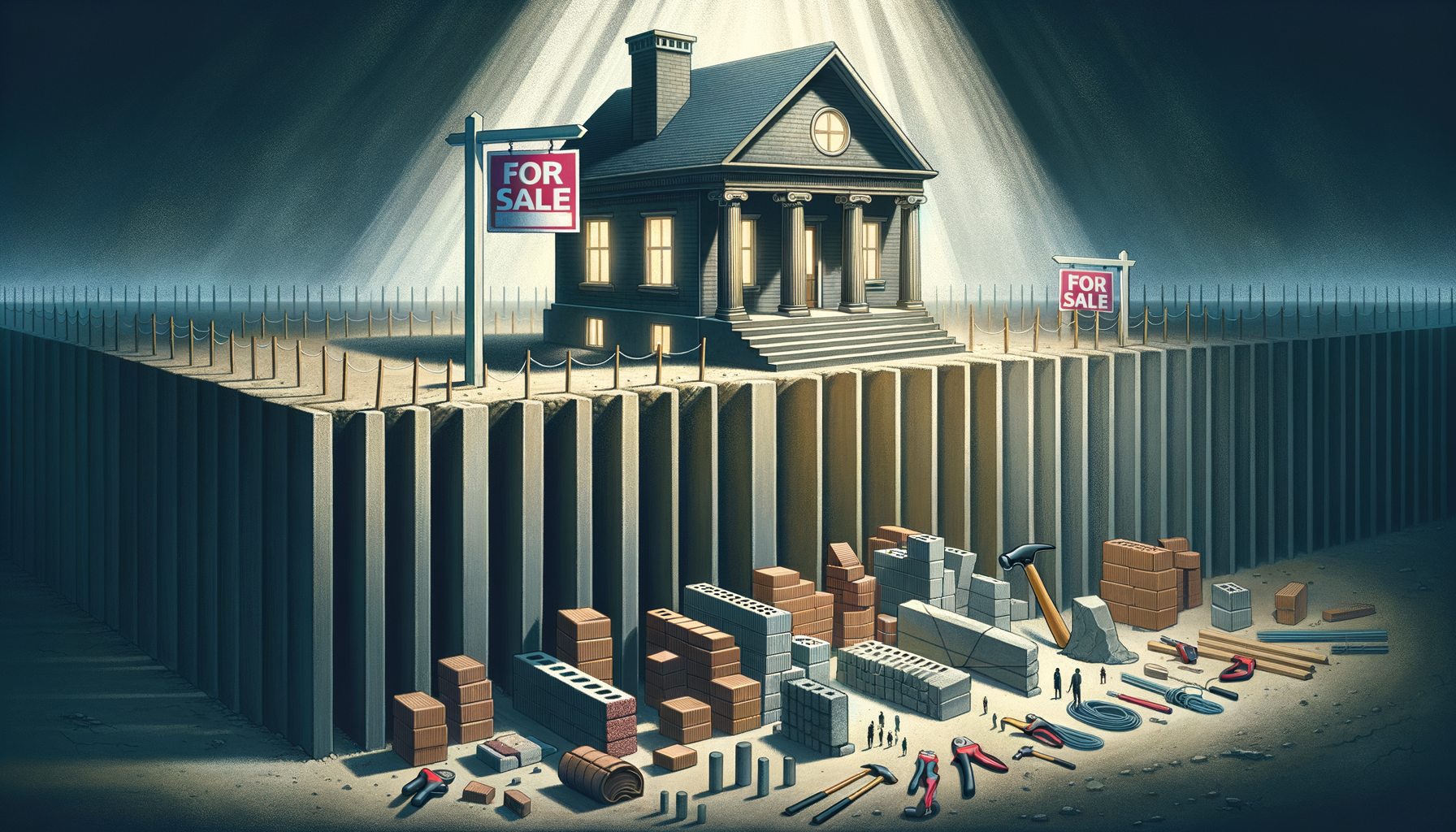“Homebuilders’ Top Concern: The Rising Impact of Elevated Borrowing Costs”

The housing construction sector, which forms a significant part of the national economy, remains fraught with concerns. The chief among these is the continuous increase in borrowing costs, this persisting issue has become the primary cause of restlessness for homebuilders across the nation.
One of the key factors leading to this anxiety among homebuilders is the noticeable thump in the costs of borrowing. This uptick, evidently spurred on by the Federal Reserve’s decision to raise interest rates, shows little sign of abating. Rising borrowing costs invariably result in higher mortgage rates, dampening potential home buyers’ enthusiasm to invest in new properties and thereby affecting homebuilders. This palpable trepidation is not restricted to certain localities but is seen to be spreading across the nation’s residential construction industry.
Some other considerable concerns affecting homebuilders include the rising price of building materials and the considerable scarcity of skilled labor. A survey conducted amongst homebuilders indicates that they are greatly troubled by these multifaceted challenges that collectively make it more expensive and complex to start new construction projects.
The Federal Reserve’s decision to progressively increase interest rates is a significant factor amplifying borrowing costs. This strategic move by the Federal Reserve is based on the firm belief that steadily raising interest rates will stave off inflation without negatively impacting employment. However, every increase has a direct effect on the borrowing costs for homebuilders. In turn, as these costs go up, so does the price of each newly constructed home. This is causing a significant number of potential home buyers to think twice before investing in brand new properties.
Additionally, the increasing prices of construction materials are giving builders quite a few sleepless nights. Take, for instance, the upsurge in the cost of lumber. Several factors, including trade tariffs and pests destroying lumber supplies, have caused lumber prices to soar. This surge inevitably tightens the profit margins for homebuilders, another test for their resilience.
Capping off these concerns is the ongoing scarcity of skilled labor within the construction industry. This shortage has resulted in higher wages for construction workers, adding an extra burden to homebuilders already beleaguered by increasing borrowing costs and climbing material prices. This situation does not seem likely to improve any time soon, particularly as immigration policies become more stringent and the number of people entering the construction labor force dwindles.
This potent combination of streamlined immigration policies, escalating borrowing costs, and skyrocketing building material prices is proving devastating for the homebuilding industry. It’s important to comprehend that as significant as these challenges might appear independently, the combined impact is far greater. The cumulative effect of these individual tribulations is prompting a rapid increase in the overall costs of constructing a new home.
It’s also important to remember that the cost of land itself adds a further layer of complexity. Homebuilders are witnessing an upswing in land prices, creating additional hindrance in their quest to construct affordable housing for potential buyers. With the cost of land, building materials, and labor all spiraling upwards, the affordability of new homes is decidedly dropping.
Whilst the industry grapples with these issues, the resultant impact extends to buyers as well. The increasing cost of home construction invariably precipitates an escalation in home prices, creating serious affordability concerns for potential buyers. This reality hits first-time buyers especially hard, as they often lack the financial resilience required to cope with these rising costs.
Furthermore, the increase in mortgage rates, caused partly by escalating borrowing costs, is also discouraging potential buyers. The rise in interest rates adds an additional financial burden on new homeowners who will likely already be coping with the high costs of home insurance, property taxes and maintenance. For many, these mounting financial pressures can be enough to dissuade them from purchasing at all, creating a visible domino effect on the market.
Understandably, this economic dilemma is not leaving industry experts complacent. Various industry players, including homebuilders, economists, and property analysts, are seeking potential solutions to counteract these issues before they grind the construction industry to a halt. There is a clear need to reduce the costs faced by homebuilders to ensure the long-term health of the industry.
One possible solution to alleviate the concerning lack of skilled labor could be to invest more heavily in vocational training and apprenticeships in building trades. By doing this, the industry can create a more talented and plentiful pool of construction workers, which would help to lower wage costs over time.
In terms of building materials, economic pressure could be applied to encourage alternative sources and suppliers. This solution, however, would require careful management to ensure that all parties adhere to environmental and quality standards. Still, promoting competition within the construction supply industry could offer a method of easing some of the financial stresses felt by homebuilders.
Addressing escalating borrowing costs is a trickier challenge, as it is predominantly dictated by external fiscal policy. However, lobbying for more favorable interest rates or making a case for special borrowing provisions for homebuilders could be a starting ground for addressing the issues.
In essence, the amalgamation of higher borrowing fees, pricey building materials, and the dearth of skilled workforce has manifested a significant issue in the home construction industry. It is crucial that viable solutions be found and implemented quickly to ensure the industry, and indeed the wider economy, does not suffer long-term consequences. The current pressures faced by homebuilders are raising significant concerns. However, with a concerted effort from industry stakeholders and appropriate policymaking, the tide can be turned to benefit both home builders and homebuyers alike.
